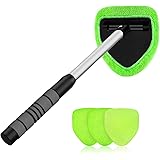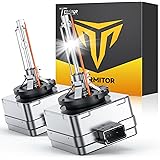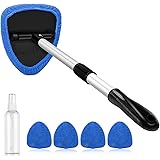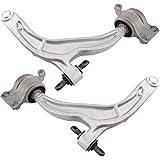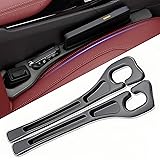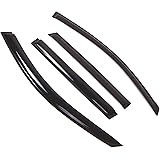Table of Contents
Low-profile tires are popular among sports car fans for their sleek look and better performance. They have a shorter sidewall height and wider tread. This design helps with handling and braking.
But, there’s a worry about their durability. Their special design might make them wear out faster. Car owners thinking about getting low-profile tires should know how they affect tire performance.
Key Takeaways
- Low-profile tires are designed for performance and aesthetics.
- Their shorter sidewall height can affect their durability.
- Tire wear rate is a critical factor in determining the lifespan of low-profile tires.
- Low-profile tires can provide better handling and braking capabilities.
- Understanding the impact of low-profile tires on tire performance is crucial for car owners.
What Are Low-Profile Tires?
Low-profile tires are popular among sports car and performance vehicle fans. They have a shorter sidewall and wider tread than regular tires.
Definition and Design Characteristics
Low-profile tires stand out with their unique design. The shorter sidewall brings the wheel closer to the road. This improves handling and stability.
The wider tread also plays a key role. It offers a bigger contact patch, enhancing grip and responsiveness.
Common Applications and Vehicle Types
Low-profile tires are a favorite for sports cars and performance vehicles. They offer better handling and look great. The design is perfect for fast driving, where quick reactions and stability matter.
Using low-profile tires shows a trend towards performance in car design. Knowing about these tires is key for drivers who value both performance and tire life.
Do Low-Profile Tires Wear Out Faster?
Many people wonder if low-profile tires last longer than regular tires. The truth is, it depends on several things.
The Short Answer
Yes, low-profile tires might wear out quicker. This is because of their design and how they’re driven. Low-profile tires are made for speed, with a thinner sidewall and wider tread. This can cause them to wear down faster.
Research and Statistics on Wear Rates
Research shows low-profile tires wear out faster than standard ones. They usually last 20,000 to 30,000 miles, depending on the car and how it’s driven.
A study by tire makers found low-profile tires last 10-20% shorter than regular tires. But, this can get worse if you drive aggressively or on bad roads.
Contributing Factors at a Glance
Several things affect how fast low-profile tires wear out, including:
- Driving habits: Fast driving, like quick acceleration and braking, can shorten their life.
- Road conditions: Potholes and uneven roads can also wear them down faster.
- Tire maintenance: Keeping them properly inflated, rotated, and aligned is key to making them last longer.
Knowing these factors and taking steps to reduce their impact can help your low-profile tires last longer.
The Science Behind Tire Wear
Tire wear is complex, involving the tread, sidewall, and road surface. The tire’s design, like its tread compound and sidewall height, greatly affects its durability and performance.
How Tire Tread Wears Down
The tread wears down due to friction with the road. Speed, load, and road conditions all play a part. As the tire moves, it experiences stress and heat, causing wear.
Tire tread wear can be uniform, uneven, or irregular. Uniform wear means even wear across the tire. Uneven wear happens when some areas wear faster.
Impact of Sidewall Height on Wear Patterns
The sidewall’s height affects wear patterns. Low-profile tires, with shorter sidewalls, are stiffer and more prone to uneven wear. This is because they absorb less road shock, leading to more tread wear.
The table below shows how sidewall height impacts wear:
| Sidewall Height | Wear Pattern | Ride Characteristics |
|---|---|---|
| Low | More prone to uneven wear | Stiffer ride, less shock absorption |
| Standard | More uniform wear | More flexible, better shock absorption |
Understanding tire wear science is key to better performance and longevity. By looking at tread compound and sidewall height, drivers can choose and maintain their tires wisely.
Physical Characteristics Affecting Low-Profile Tire Longevity
Low-profile tires have traits like sidewall flexibility and contact patch that affect their wear. Knowing these traits helps us see how long these tires will last.
Reduced Sidewall Flexibility
Low-profile tires have shorter sidewalls, making them less flexible. This means they can’t absorb road bumps as well as standard tires. Driving on rough roads or hitting potholes can put more stress on these tires.
Increased stress on the tire can cause uneven wear and damage. The stiff sidewalls also make the ride noisier and bumpier, affecting your drive.
Contact Patch Differences
The contact patch is the part of the tire that touches the road. Low-profile tires have a wider, shorter contact patch than standard tires. This can make the tire wear down faster, mainly on the shoulders.
The wider contact patch can make the tire rub against the road harder during turns. This leads to more wear on the outer edges of the tire.
| Tire Type | Contact Patch Characteristics | Impact on Wear Rate |
|---|---|---|
| Low-Profile Tires | Wider, shorter contact patch | Increased wear on tire shoulders |
| Standard Tires | Narrower, longer contact patch | More even wear distribution |
Understanding the physical traits of low-profile tires helps drivers keep them in good shape. Regular care, proper inflation, and careful driving can help these tires last longer.
Driving Conditions That Accelerate Low-Profile Tire Wear
Driving conditions can wear down low-profile tires faster. Knowing these factors helps drivers keep their tires in good shape.
Urban Driving Challenges
Urban driving is tough on low-profile tires. Stopping and starting a lot, plus hitting potholes and curbs, speeds up wear. Stop-and-go traffic in cities makes tires heat up, which harms them quicker.
Urban roads also have more debris and hazards. These can damage low-profile tires because of their thin sidewalls. Drivers in cities need to keep an eye on tire pressure and look for wear signs.
Highway Performance
Driving fast on highways can also wear down low-profile tires. High speeds mean more heat, which harms the tires. Proper inflation helps manage this heat and keeps tread even.
Highway driving at high speeds for a long time can overheat tires. This can shorten their life and might cause a blowout if not managed right.
Impact of Road Quality
Road quality greatly affects low-profile tire wear. Potholes and uneven roads can cause uneven wear and damage. Low-profile tires have less cushioning against these issues.
Drivers facing poor road conditions should adjust their driving. Regular tire checks can spot wear early, helping extend tire life.
Drivers can take steps to protect their tires by understanding how different conditions affect them. This includes changing driving habits, maintaining tires, and watching road conditions.
Performance Benefits vs. Durability Trade-offs
Drivers often face a choice between performance and durability with low-profile tires. These tires are made to improve a car’s handling and feel. They are a favorite among those who love to drive.
Handling and Responsiveness Advantages
Low-profile tires have many benefits. They help with improved cornering and enhanced steering response. Their wide contact patch and stiff sidewalls make them great for handling.
- Better grip on the road
- Improved stability at high speeds
- Enhanced driver feedback
The Cost of Performance in Tire Lifespan
While low-profile tires are great for performance, they wear out faster. The design that makes them handle well also causes increased wear. Road conditions, driving habits, and vehicle alignment affect how long they last.
To make low-profile tires last longer, drivers should watch their driving and keep their car in good shape. Regular tire rotation, proper inflation, and avoiding harsh driving can help. This can reduce some of the durability issues with these tires.
Low-Profile vs. Standard Tires: Durability Comparison
Knowing the durability differences between low-profile and standard tires helps drivers choose the right tires. These tires have unique designs that affect their lifespan and performance.
Tread Life Expectations
Low-profile tires usually last less time than standard tires. Their design, with a shorter sidewall and wider contact patch, leads to faster wear. The reduced sidewall height makes them less flexible, causing more tread wear.
Standard tires, with taller sidewalls, are more flexible and better at absorbing road shocks. This can make them last longer.
Many things can affect how long low-profile tires last, like driving habits, road conditions, and the type of vehicle. For example, driving on rough urban roads or aggressively can wear them down faster.
Vulnerability to Road Hazards
Low-profile tires are more at risk from road hazards because of their design. Their lower sidewall offers less protection against potholes and curbs. This makes them more likely to get damaged.
Standard tires, with their taller sidewalls, can handle more shock from the road. This makes them more durable and less prone to damage.
Drivers who often face rough roads might find standard tires more durable. But, those who value performance and handling might still choose low-profile tires. They just need to be aware of the risks and take steps to protect their tires.
In summary, while low-profile tires have their benefits, they are not as durable as standard tires. Drivers should consider these differences when choosing tires based on their needs and driving conditions.
Factors That Decrease Low-Profile Tire Lifespan
Many things can shorten the life of low-profile tires. Knowing what these are is key to keeping tires in top shape. We’ll look at the main factors that harm low-profile tire life.
Improper Inflation Pressure
Improper inflation pressure is a big problem. If tires are underinflated, they flex more and get hotter, wearing down faster. On the other hand, overinflating can make them less grippy and more prone to damage. It’s important to keep the tire pressure right to avoid uneven wear and extend life.
Alignment Issues
Alignment issues can also hurt tire life. If wheels aren’t aligned right, tires wear unevenly, leading to early breakdown. Misalignment can come from worn parts, wrong installation, or accidents. Getting regular alignment checks helps prevent uneven wear and keeps tires healthy.
Aggressive Driving Habits
Aggressive driving habits like quick acceleration, hard braking, and sharp turns stress tires too much. This can cause them to wear out faster and even fail. Driving more smoothly can help reduce this stress and make tires last longer.
By knowing and fixing these key issues, car owners can help their low-profile tires last longer. Keeping up with maintenance, ensuring proper inflation, and driving carefully are all important for tire health and performance.
Maintenance Practices to Extend Low-Profile Tire Life
To make low-profile tires last longer, it’s key to follow a detailed maintenance plan. Good care not only makes tires last longer but also keeps them running well and safely.
Optimal Pressure Maintenance
Keeping the right tire pressure is vital for low-profile tires. If they’re underinflated, the edges wear out faster. But if they’re too full, the center gets worn down quicker. Checking and adjusting the pressure regularly, as the maker suggests, can really help them last.
Regular Rotation Schedule
Rotating tires regularly is another important step. It makes sure they wear evenly, avoiding uneven wear that means you’ll need new tires sooner. Most car makers say to rotate tires every 5,000 to 8,000 miles.
Alignment and Balancing Importance
Getting your wheels aligned and balanced right is also key for long-lasting tires. If wheels are off, tires wear unevenly. And if they’re not balanced, you’ll feel vibrations that can harm the tires. So, it’s smart to check alignment and balance often.
By sticking to these maintenance steps, car owners can make their low-profile tires last longer. Regular checks and tweaks not only extend tire life but also boost your car’s performance and safety.
- Check tire pressure monthly and before long trips.
- Rotate tires every 5,000 to 8,000 miles.
- Have wheel alignment checked annually or when noticing uneven wear.
- Balance wheels whenever tires are rotated or replaced.
Key Takeaways: Keeping the right tire pressure, following a regular rotation schedule, and making sure alignment and balancing are correct are all crucial for making low-profile tires last longer.
Selecting the Right Low-Profile Tires for Longevity
Choosing the right low-profile tires is key to their durability and performance. Several factors are important to ensure they last long.
Tread Compound Considerations
The tread compound is crucial for tire longevity. Harder compounds last longer but might affect grip and handling. Softer compounds offer better traction but wear out quicker. Finding a balance is essential for low-profile tires.
Tires with advanced tread compounds can last longer. For example, silica-based compounds are durable and improve fuel efficiency.
Brand and Quality Differences
The brand and quality of low-profile tires greatly affect their lifespan. Reputable brands focus on research and development. This leads to tires that are both durable and perform well.
When picking low-profile tires, look at the quality differences between brands. High-quality tires might cost more upfront but offer better value over time. They last longer and perform consistently.
Top brands like Michelin, Continental, and Bridgestone are known for their quality. They offer various models to meet different driving needs and preferences.
Real-World Experiences: Low-Profile Tire Durability
Many car owners have tried low-profile tires. They share their thoughts on how these tires last and perform. Knowing how durable they are is key when deciding to use them.
Driver Testimonials
Drivers who’ve used low-profile tires talk about their good and bad sides. For example, a sports car fan said his tires handle great in sharp turns. But, they ride a bit rough on bumpy roads.
“I was worried about low-profile tires lasting, but mine are still perfect after 20,000 miles. Keeping the right pressure and rotating them helps.” – John D., BMW Owner
Sarah K., Mercedes-Benz owner, said her tires drive beautifully. Yet, she had to replace them sooner than usual standard tires. This was because of her aggressive driving.
Expert Opinions from Mechanics and Tire Specialists
Experts like mechanics and tire specialists have a lot to say about low-profile tires. Mike T., a mechanic, notes that these tires wear out faster. This is because of their design.
| Tire Type | Average Lifespan (Miles) | Common Wear Issues |
|---|---|---|
| Low-Profile Tires | 25,000 – 35,000 | Center Wear, Increased Vulnerability to Punctures |
| Standard Tires | 40,000 – 60,000 | Even Wear, Less Prone to Punctures |
Tom S., a tire expert, stresses the need for good care. “Regular rotation, correct inflation, and avoiding harsh driving can help low-profile tires last longer.”
In summary, experiences with low-profile tires differ. They depend on how you drive, maintain them, and what car you have. Some drivers love the performance, while others face durability issues. By understanding these points and taking the right steps, car owners can make their low-profile tires last longer.
Cost Analysis: Are Low-Profile Tires Worth the Investment?
Looking at the cost of low-profile tires means checking their price, how often they need to be replaced, and how long they last. They might improve performance, but their value depends on several things.
Initial Purchase Price Comparison
Low-profile tires cost more to buy than regular tires. This is because they are made differently to improve how they handle and stop. For example, a set for a fast car can be $800 to $1,200. Regular tires for the same car might be $500 to $900.
Here’s a table to show the price difference:
| Tire Type | Average Cost per Set |
|---|---|
| Low-Profile Tires | $800 – $1,200 |
| Standard Tires | $500 – $900 |
Replacement Frequency Considerations
How often you need to replace low-profile tires affects their total cost. Your driving style, the roads you drive on, and how well you maintain your car all matter. If you drive hard or the roads are bad, you might need to replace them more often.
Average Lifespan: These tires usually last 20,000 to 30,000 miles, depending on these factors.
Long-Term Cost Calculations
To see if low-profile tires are worth it, you need to look at their long-term cost. This means not just the first price but also the cost of replacing them later. Even though they cost more at first, their benefits might be worth it for those who value how well they handle.
Cost Over Time: For someone who drives 15,000 miles a year, comparing the total cost of low-profile tires to regular ones can help decide which is better value.

By looking at these points, drivers can decide if low-profile tires are a good choice for them.
Future Trends in Low-Profile Tire Technology
Future trends in low-profile tire technology aim to solve long-standing wear and durability problems. The tire industry keeps growing thanks to new tech and materials science.
Innovations Addressing Wear Issues
Low-profile tires often wear out quicker than regular tires. But, new designs and materials are making them last longer. For example, advanced tread compounds that resist wear are a big step.
Tire makers are also working on new tread patterns. These patterns improve grip and cut down on wear. This means low-profile tires will last longer and still perform well.
Emerging Materials and Design Improvements
New materials like advanced polymers and reinforced materials are changing tire making. These materials make tires stronger and last longer.
Designs are also getting better, thanks to research and development. For instance, using computer models helps design tires that last longer and perform better.
| Innovation | Description | Benefit |
|---|---|---|
| Advanced Tread Compounds | New materials that resist wear | Longer tire life |
| New Tread Patterns | Improved traction designs | Enhanced performance |
| Emerging Materials | Advanced polymers and reinforced materials | Improved strength and durability |
As these trends keep growing, we’ll see big improvements in low-profile tire durability and performance. The future of low-profile tire tech looks bright, with a focus on being sustainable, efficient, and better for drivers.
Conclusion
Low-profile tires mix style with performance, but they can be a worry for drivers. We’ve looked at what makes them last longer, like their design and how you drive. We also talked about keeping them in good shape.
Our research shows low-profile tires might wear out quicker because they’re stiffer. But, taking care of them properly can make them last longer. This includes keeping the right pressure and rotating them regularly.
Choosing the right low-profile tires is key. Look at the tread, brand, and quality to get the best performance and durability. Knowing how to care for them helps drivers enjoy their benefits without the downsides.
In the end, deciding on low-profile tires is a big choice. It’s about weighing their good points against their potential wear and tear. And always remember to keep them well-maintained.


